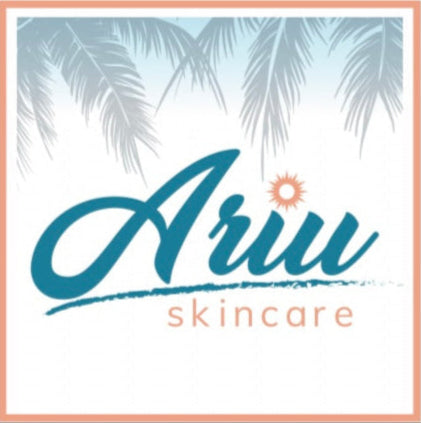Safe Exfoliation Tips for Moms: Pregnancy and Postpartum Skincare
Share
Pregnancy and postpartum are transformative times, and many moms want to continue their skincare routines to maintain that healthy glow. However, with the abundance of skincare products and ingredients available, it can be challenging to determine which exfoliants are safe to use during this sensitive period.
For some moms, hormonal changes might lead to skin congestion, making it tempting to reach for exfoliants to restore clarity and smoothness. Yet, finding the right products that are both effective and safe for both you and your baby is crucial.
Whether you’re trying to keep up with your existing routine or are just starting to explore exfoliation options, understanding which ingredients are appropriate is key to achieving healthy, radiant skin without compromising safety.
In this article, we’ll guide you through the essentials of exfoliation, highlight safe practices for pregnancy and postpartum, and provide recommendations for maintaining your skin’s health during this special time.
Understanding Exfoliation
What is Exfoliation?
Exfoliation is the process of removing dead skin cells from the skin's surface, revealing smoother, brighter skin underneath. This process can help to unclog pores, reduce the appearance of fine lines, and promote a more even skin tone. While the skin naturally sheds dead cells, this process can slow down due to hormonal changes during pregnancy, leading to a buildup that can make your skin look dull or contribute to breakouts.
Types of Exfoliation
- Physical Exfoliation: Involves the use of scrubs or tools like brushes or washcloths to manually remove dead skin cells. It’s important to choose gentle, non-abrasive options to avoid irritating sensitive pregnancy skin.
- Chemical Exfoliation: Uses acids or enzymes to dissolve dead skin cells. This method can be more effective and less abrasive than physical exfoliation, especially when using pregnancy-safe acids.
Cautions Against Over-Exfoliation
Over-exfoliating can be harmful, leading to irritation, increased sensitivity, and damage to the skin’s protective barrier. It’s important to pay attention to how your skin reacts to exfoliation. Signs of over-exfoliation include redness, peeling, and heightened sensitivity. During pregnancy, your skin may be more sensitive, so it’s crucial to approach exfoliation with caution.
Personalized Exfoliation
Every person’s skin is different, and the type and frequency of exfoliation that works best will vary. Factors such as your skin type, specific skin concerns, and how your skin is reacting to pregnancy or postpartum hormones should guide your exfoliation routine. It’s advisable to start slow, perhaps once or twice a week, and adjust based on how your skin responds. Always listen to your skin—if it feels irritated or overly sensitive, it’s time to cut back.
The Safety Concerns
During pregnancy and breastfeeding, certain skincare ingredients should be avoided due to potential risks to your baby. This includes some common exfoliating ingredients like salicylic acid and retinoids. It’s essential to carefully choose exfoliants that are safe for both you and your baby.
Safe Exfoliation Methods
Physical Exfoliation:
- Opt for gentle scrubs with fine, non-abrasive particles.
- Use soft brushes or washcloths that won’t irritate your skin.
Chemical Exfoliation:
- Lactic Acid: A gentle AHA that hydrates while it exfoliates.
- Glycolic Acid: Effective in low concentrations (usually less than 7%) for brightening and smoothing the skin.
- Azelaic Acid: Excellent for treating acne and hyperpigmentation, azelaic acid is safe during pregnancy and can be used regularly.
- Mandelic Acid: Derived from almonds, this AHA is gentle on the skin and works well for exfoliating and managing acne.
- Malic Acid: Found in apples, malic acid is a mild exfoliant that helps brighten and smooth the skin.
- Tartaric Acid: Derived from grapes, tartaric acid is another gentle exfoliant that improves skin texture.
- Polyhydroxy Acids (PHAs): Such as gluconolactone, PHAs are even gentler than AHAs, making them ideal for sensitive skin. They exfoliate the skin's surface while also providing hydration.
Post-Exfoliation Care
After exfoliating, it’s vital to replenish your skin’s moisture. Always follow up with a good moisturizer to lock in hydration and soothe your skin. Additionally, since exfoliation can make your skin more sensitive to the sun, be sure to apply a broad-spectrum sunscreen during the day to protect your skin.
Conclusion
Exfoliation can be a great way to keep your skin glowing and healthy during pregnancy and postpartum, but it’s important to do it safely. Choose gentle, pregnancy-safe exfoliants and be mindful of your skin’s unique needs during this time. By prioritizing safe skincare practices, you can maintain your skin’s health and radiance while protecting your baby.
Always consult with a healthcare provider if you’re unsure about any skincare products or ingredients. By focusing on safe and effective skincare, you’re giving yourself the care you deserve during this important time, while also protecting your baby’s well-being.
